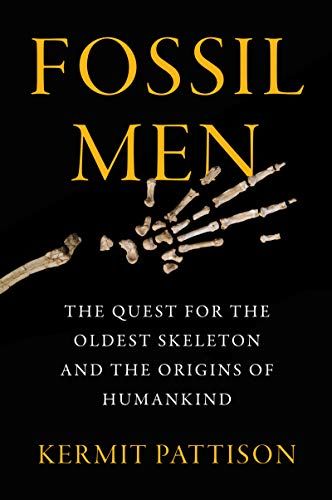Fossil Men: The Quest for the Oldest Skeleton and the Origins of Humankind
A behind-the-scenes account of the discovery of the oldest skeleton of a human ancestor, named "Ardi"--a find that shook the world of paleoanthropology and radically altered our understanding of human evolution.
In 1994, a team led by fossil-hunting legend Tim White--"the Steve Jobs of paleoanthropology"--uncovered the bones of a human ancestor in Ethiopia's Afar region. Radiometric dating of nearby rocks indicated the skeleton, classified as Ardipithecus ramidus, was 4.4 million years old, more than a million years older than "Lucy," then the oldest known human ancestor. The findings challenged many assumptions about human evolution--how we started walking upright, how we evolved our nimble hands, and, most significantly, whether we were descended from an ancestor that resembled today's chimpanzee--and repudiated a half-century of paleoanthropological orthodoxy.
Fossil Men is the first full-length exploration of Ardi, the fossil men who found her, and her impact on what we know about the origins of the human species. It is a scientific detective story played out in anatomy and the natural history of the human body. Kermit Pattison brings into focus a cast of eccentric, obsessive scientists, including one of the world's greatest fossil hunters, Tim White--an exacting and unforgiving fossil hunter whose virtuoso skills in the field were matched only by his propensity for making enemies; Gen Suwa, a Japanese savant who sometimes didn't bother going home at night to devote more hours to science; Owen Lovejoy, a onetime creationist-turned-paleoanthropologist; Berhane Asfaw, who survived imprisonment and torture to become Ethiopia's most senior paleoanthropologist and who fought for African scientists to gain equal footing in the study of human origins; and the Leakeys, for decades the most famous family in paloanthropology.
| Author | Kermit Pattison |
|---|---|
| Publisher | William Morrow |
| Place | New York |
| Year | 2021-08-03 |
| ISBN | 9780062410290 |
| Binding | Paperback |
| Condition | Very Good |
How we describe the condition of our books
We are very proud of the condition of the books we sell (please read our testimonials to find out more!)
New: Exactly as it says.
As New: Pretty much new but shows small signs of having been read; inside it will be clean without any inscriptions or stamps; might contain a remainder mark.
Very Good: Might have some creases on the spine; no hard cracks; maybe slight forward lean and short inscription inside; perhaps very minor bumping on the corners of the book; inside clean but the page edges might be slightly yellowed.
Good: A few creases on the spine, perhaps a forward lean, bumping on corners or shelfwear; maybe an inscription inside or some shelfwear or a small tear or two on the dustjacket; inside clean but page edges might be somewhat yellowed.
Fair: In overall good condition, might have a severe forward lean to the spine, an inscription, bumping to corners; one or two folds on the covers and yellowed pages; in exceptional cases these books might contain some library stamps and stickers or have neat sticky tape which was used to fix a short, closed tear.
Poor: We rarely sell poor condition books, unless the books are in demand and difficult to find in a better condition. Poor condition books are still perfect for a good read, all pages will be intact and none threatening to fall out; most probably a reading copy only.


